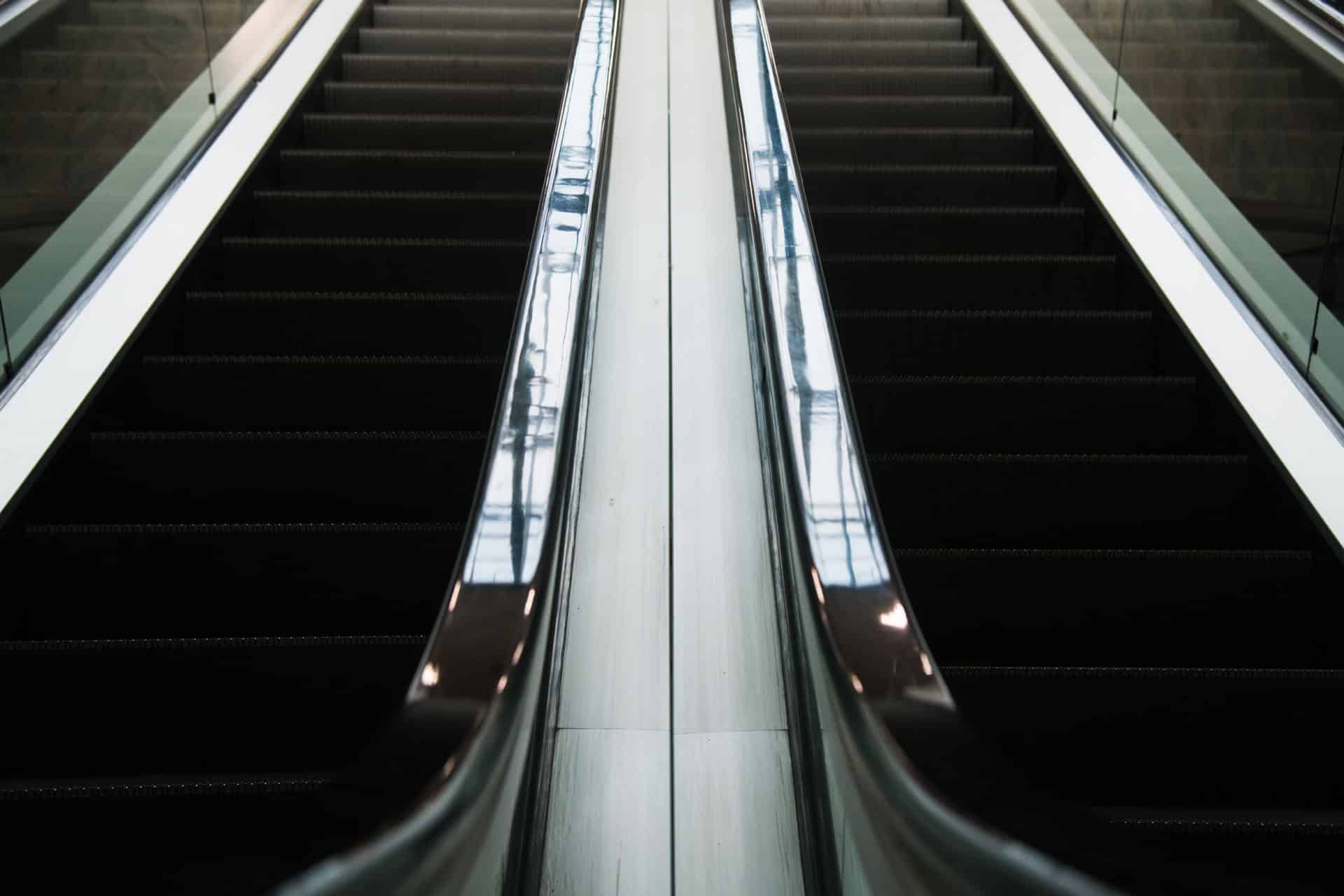Free Consultation
Free Consultation

Every few months, a clip on the evening news or a story online shows footage of an elevator or escalator accident. These incidents are usually pretty scary, whether the elevator is randomly speeding up as it rises, or a malfunction causes people to pile up on the floor below.
We ride escalators and elevators everywhere – in malls, airports, stadiums, and so on – and most of the time the possibility of an elevator or escalator accident probably doesn’t even occur to us. Unfortunately, experts and personal injury lawyers are worried that these accidents are more common than we might think, and the problem is only getting worse.
Elevator injuries can be gruesome and terrifying, but escalators are actually more worrisome. Why? Because for every elevator accident, there are 18 escalator accidents. If the escalator is crowded, even more people are affected.
In 1990, there were 5,000 escalator injuries and deaths reported in the United States. Twenty-three years later, that number had doubled. In 2013, 12,260 people were injured or killed on escalators in the United States. Of these accidents, children and seniors are the groups most likely to be affected.
The types of injuries these accidents cause include:
A study from 2013 looked at some of the victims from elevator and escalator accidents. Most of the accidents involved the passenger slipping and falling, and the study is quick to point out that many of the injured persons had consumed alcohol before they were injured. Other common causes of elevator and escalator accidents listed in the study include the behavior of another passenger.
Passenger behavior is only one piece of the puzzle. However, it is the piece that is most scrutinized during personal injury cases. If the manufacturer of an elevator or escalator is sued for an injury or death, they almost always turn the tables on the plaintiff to avoid compensation.
They may ask about the behavior of the victim. They often inquire if they had alcohol before getting onto the elevator or escalator, or the clothing they were wearing (untied shoes or loose clothing may have an impact). Basically, any argument that big manufacturers can use to reduce compensation will be used.
Unfortunately, trying to put the blame on victims takes our attention away from an important cause of elevator and escalator accidents: faulty construction or installation. Many elevator or escalator accidents could be prevented if the manufacturer or maintenance workers responsible for the device take the steps necessary to ensure their safety.
Case-in-point: last October, a 6-week-old girl was killed in Brooklyn after elevator doors opened before the car had fully risen to let the passengers in. The girl fell 6-8 feet onto the roof of the car in a stroller. As the mother fell next to her, the elevator plummeted eight stories. The mother was injured, but thankfully she survived.
The kicker? This elevator had been notorious for not working. Residents of the Coney Island building reported being afraid to take elevators throughout the building due to their faulty history.
In the year and a half before the fatal accident, 20 people had complained about the elevators not working. This particular elevator had four open building code violations, among almost 50 other violations throughout the building. Only two months before the fatal accident, a “defect” was noted.
Clearly, it wasn’t fixed.
After the incident occurred, building staff told residents that they would inspect the elevators and offer grief counseling for anyone who was affected by the accident.
In a case like this, passenger fault should not be an issue. The elevator was clearly faulty, and the maintenance professionals involved were negligent. Even so, there were questions raised against the victims. Even the mayor of New York called the death a “painful mystery.”
This is the reality plaintiffs must face. If you file a lawsuit for injury or wrongful death due to an elevator or escalator accident, you are bound to endure questions about your role in the incident. You must be ready to defend your actions and call those of management, manufacturers, and maintenance workers into question.
Despite this, fighting back is in your best interest. Elevator and escalator accidents can cause serious injuries and rack up thousands of dollars in medical bills – if not more.
If you are the victim of a faulty elevator, an escalator malfunction, or the negligence of a property manager who ignored the warning signs of this accident, you deserve compensation. To learn more about filing a claim after an elevator or escalator accident, reach out to a New York personal injury lawyer today.